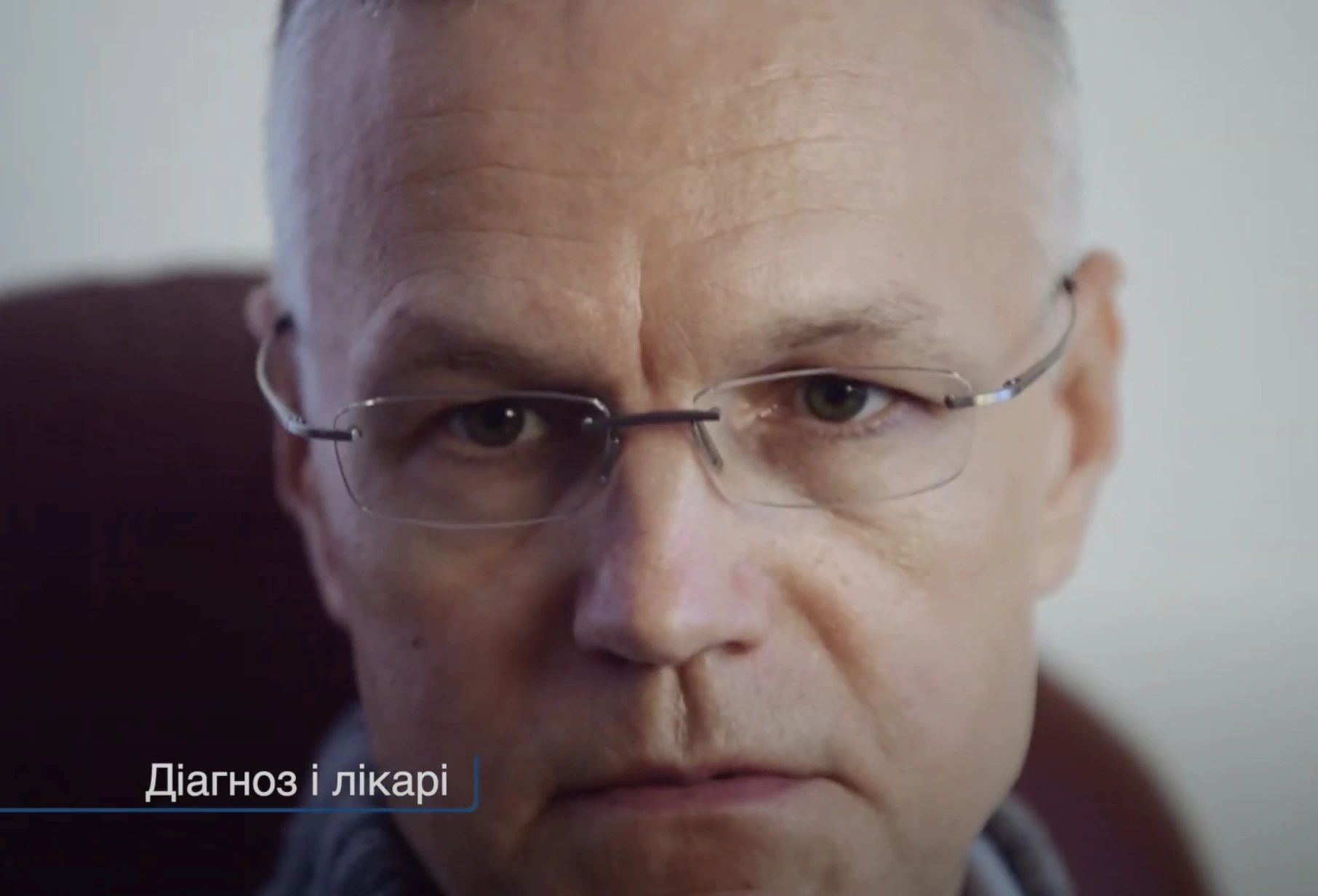-
 News
When glucose levels are low, chemotherapy ceases to affect cancer cells
News
When glucose levels are low, chemotherapy ceases to affect cancer cells
-
 News
Excessive treatment of prostate cancer in older men may reduce quality of life without increasing its duration
News
Excessive treatment of prostate cancer in older men may reduce quality of life without increasing its duration
-
 News
Brain cancer can be cured by viruses
News
Brain cancer can be cured by viruses
-
 News
Ways to reduce lymphatic pain in breast cancer have been found
News
Ways to reduce lymphatic pain in breast cancer have been found
-
 News
Scientists have turned bacteria into a powerful weapon against cancer
News
Scientists have turned bacteria into a powerful weapon against cancer
All news
Periodontitis treatment
Bleeding while brushing your teeth is an inflammation of the gums. This will lead to destruction of gums, bones and ultimately loss of teeth.
- 90% of adults and 70% of children have gum disease.
- In most cases, periodontitis occurs after the age of 30.
Modern diagnostic methods: probing, radiography, periodontal screening index (PSI).
Innovative treatment: bone grafting, cleaning with an ultrasound machine, open curettage, systemic or local therapy with new generation drugs.
MedTour patients recommend clinics for the treatment of periodontitis:
Doctors for the treatment of periodontitis
Patient reviews
Frequently Asked Questions
Periodontal disease or periodontitis is a chronic inflammatory disease of the dental support system (tooth bed, periodontium), which leads to the loss of periodontal tissue in the tooth. These include:
- Gums – cover the outside of the rest of the teeth to hold the teeth.
- Root cement is a thin mineral layer that surrounds the tooth root.
- Periodontal gap – runs between the alveolar bone and the root of the tooth.
- Jaw bones.
The causes of periodontitis are bacteria. They enter the gum tissue – which leads to inflammation. This early stage only causes superficial inflammation of the gums and is called gingivitis. A common sign of gingivitis is redness of the gums. Further, the inflammation penetrates into the jawbone, destroying the fibers that make up the tooth. This speaks of periodontal disease.
Risk factors include:
- Smoking,
- Diabetes mellitus,
- Increased alcohol consumption,
- Dental calculus,
- Weak or sick immune system,
- Unbalanced diet,
- Genetics.
Periodontitis can be completely painless for a long time. But there are warning signs that indicate periodontal disease:
- Bleeding gums (for example, at home during oral hygiene or spontaneously),
- Swelling and redness of the gums,
- Descending gums,
- Sensitive tooth necks,
- Persistent bad breath,
- Bad taste in the mouth,
- Pus comes out of gum pockets,
- Loose teeth.
No. If the gums have been damaged by such a serious disease, they cannot be cured just like that without the help of a doctor.
Yes, it is curable. But improper treatment often causes significant damage to the oral cavity. Therefore, you should have your gums checked at regular check-ups by a qualified dentist. Experienced periodontists from all over the world are represented on the MedTour platform. Leave a request and you will receive a free consultation.
If it is not treated, all tissues around the tooth are increasingly destroyed. This leads to loosening and loss of teeth.
With this chronic inflammation, large wounds are formed. Through these wounds, aggressive periodontal bacteria enter the bloodstream and thus enter the entire body. Periodontal and cardiovascular diseases have common risk factors. In the absence of treatment for periodontal disease, the risk of atherosclerosis increases. This is followed by coronary artery disease, heart attack and an increased risk of stroke in already damaged blood vessels.
In hospitals abroad, diagnostics are carried out as follows:
- Measurement of gingival pockets and their bleeding during probing,
- Establishing a baseline for assessing possible progress,
- Conducting an X-ray,
- Measurement of the Periodontal Screening Index (PSI).
In foreign clinics, 3 treatment options are used:
- Open,
- Closed,
- Systemic or local therapy with antibacterial drugs.
International standards for the diagnosis and treatment of periodontitis
Foreign clinics carry out diagnostics in the following areas:
- Measurement of gingival sacks and cheking if they are bleeding,
- Assessment of the progress,
- Drawing up an X-ray report.
In foreign dentistry, the Periodontal Screening Index (PSI) is used – this is a way to determine the condition of the gums. The gums are examined with a special probe and then divided into 5 categories: from “healthy” to “severe periodontitis”.
Method one: closed treatment
Closed treatment does not require surgery and takes place without opening the gums. The root and surface of the tooth is cleaned mechanically using a hand instrument (curette) or an ultrasonic apparatus.
In the case of mild to moderate periodontitis, the dentist will achieve good results with closed therapy. In this case, the gingival pockets must be at least 3.5 mm deep to be healed. Since this therapy also includes the surface of the roots of the teeth, the patient is injected with an anesthetic and the treatment is painless.
Method two: open treatment
Open cure is known as open curettage. This is a difficult procedure that a dentist can undertake in acute cases. In clinics abroad, it works like this: the gums open and bend outward, so that the roots of the teeth and gum pockets can be cleaned even during examination.
Open curettage is usually performed only when the closed method fails. Then the treated area is sutured again, and it is given the opportunity over time to nestle against the clean surfaces of the teeth.
Third method: antibiotic treatment
The third method involves the appointment of antibiotics. Doctors abroad only recommend this for certain forms of the disease. In the case of aggressive or very persistent forms, it is possible to use antibacterial therapy:
- Locally (in the gum pocket),
- Systemically (in pill form).
Antibiotic therapy alone does not make sense – there can be no long-term treatment without addressing the cause.
Surgical treatment for advanced cases
Foreign hospitals offer innovative types of operations for advanced periodontitis:
- Surgery to resize the gums – flap surgery,
- Transplantation of tissues of the gums, periodontium and periodontium,
- Plastic with bone graft.
- Regeneration of gum tissue with a special biomaterial,
- The introduction of proteins to stimulate the growth of tissues around the tooth.
After treatment: control and bone grafting
This disease requires constant monitoring with regular prophylaxis and examinations at the dentist. Even without recurrence of symptoms such as bleeding gums or loose gums, the patient should take prevention seriously and visit the dentist at least twice a year.
If you have had the disease, there is a constant risk of it returning. You can avoid bloody marks on apples or brushing your teeth and reddening of the gums by regularly removing tartar and hard and soft deposits from your teeth.
If this lasts a long time, the jaw bone continues to deteriorate as a result of inflammation. Whether bone augmentation or prosthetics makes sense depends on:
- Your age,
- Oral hygiene,
- Areas of defeat.
Published:
Updated:


Information on this webpage verified by the medical expert









Спасибо МедТур за организацию качественной стоматологической помощи без развода и навязывания лишних услуг!